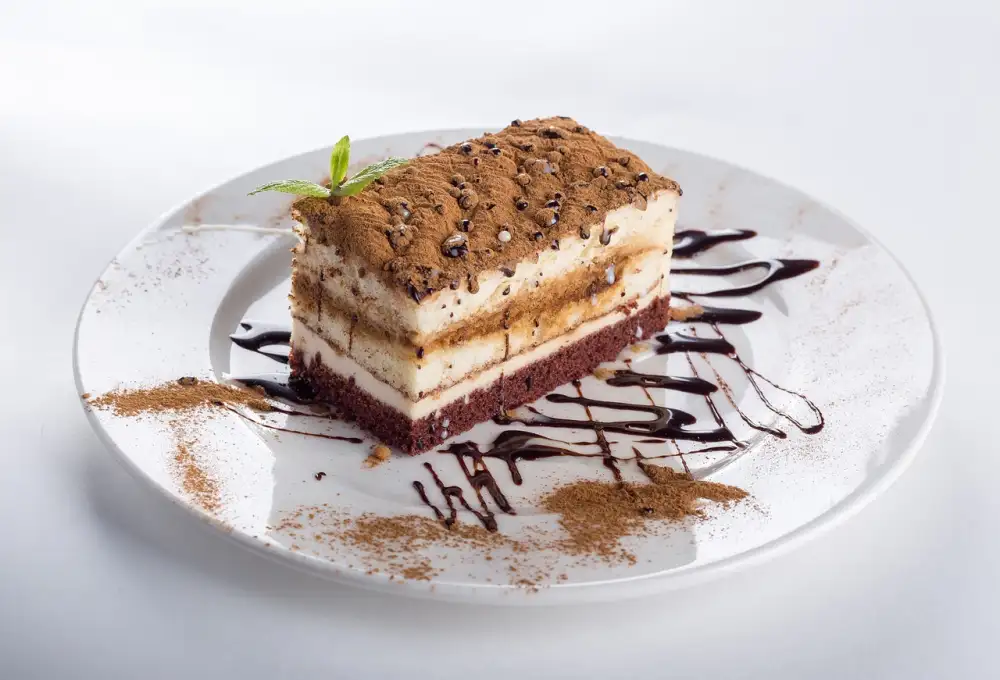Perfectly Cooked: Discover the Ideal Baking Time for Boneless Skinless Chicken Thighs

- Understanding the Importance of Cooking Time for Boneless Skinless Chicken Thighs
- Preparing the Chicken Thighs for Baking: Seasoning and Marinating Tips
- Oven Temperature and Cooking Time: Finding the Right Balance
- Step-by-Step Guide: How Long to Bake Boneless Skinless Chicken Thighs
- 1 Preheating the Oven to Optimal Temperature
- 2 Placing the Chicken Thighs on a Baking Sheet or Dish
- 3 Determining the Cooking Time Based on Thickness and Weight
- 4 Checking for Doneness: Using a Meat Thermometer or Visual Cues
- Achieving Juicy and Tender Chicken Thighs: Tips for Avoiding Overcooking
- Serving Suggestions: Pairing Baked Boneless Skinless Chicken Thighs with Delicious Sides
When it comes to cooking boneless skinless chicken thighs, finding the perfect baking time can make all the difference between a juicy, flavorful dish and a dry, tasteless one. Whether you're a seasoned chef or a beginner in the kitchen, understanding the ideal cooking time is essential for achieving tender and succulent chicken thighs every time. In this article, we will delve into the importance of cooking time, share tips on seasoning and marinating, discuss oven temperature, and provide a step-by-step guide to help you determine exactly how long to bake your boneless skinless chicken thighs. Get ready to elevate your culinary skills and create mouthwatering chicken dishes that will impress even the most discerning taste buds.
Understanding the Importance of Cooking Time for Boneless Skinless Chicken Thighs
Understanding the importance of cooking time for boneless skinless chicken thighs is crucial in achieving a perfectly cooked and flavorful dish. Cooking time directly affects the texture and juiciness of the meat. Overcooking can result in dry and tough chicken, while undercooking can lead to raw or unsafe meat. By understanding the ideal cooking time, you can ensure that your chicken thighs are tender, moist, and packed with delicious flavors.
Preparing the Chicken Thighs for Baking: Seasoning and Marinating Tips
When it comes to preparing boneless skinless chicken thighs for baking, seasoning and marinating are key steps in enhancing the flavor and tenderness of the meat. Before seasoning, make sure to pat the chicken thighs dry with a paper towel to remove any excess moisture. This will help the seasonings adhere better to the meat.
For basic seasoning, you can use a combination of salt, pepper, garlic powder, and paprika. However, don't be afraid to get creative with your seasonings! Experiment with different herbs and spices like thyme, rosemary, cumin, or chili powder to add depth and complexity to your dish.
Marinating the chicken thighs before baking can also infuse them with additional flavors. You can use a simple marinade consisting of olive oil, lemon juice, minced garlic, and your choice of herbs or spices. Place the chicken thighs in a resealable plastic bag or a shallow dish and pour the marinade over them. Make sure all sides of the chicken are coated evenly. Allow the chicken to marinate in the refrigerator for at least 30 minutes or up to overnight for maximum flavor.
Remember that marinating is optional but highly recommended as it helps tenderize the meat and adds an extra layer of taste. So take some time to season and marinate your boneless skinless chicken thighs before baking for a truly delicious result!
Oven Temperature and Cooking Time: Finding the Right Balance
Oven temperature and cooking time play a crucial role in achieving perfectly cooked boneless skinless chicken thighs. Finding the right balance is essential to ensure that the chicken cooks evenly and retains its juiciness. A higher oven temperature will result in a shorter cooking time but may risk drying out the meat. On the other hand, a lower oven temperature will require a longer cooking time but can help maintain moisture. It's important to experiment and find the ideal temperature and cooking time that works best for your preferences and equipment.
Step-by-Step Guide: How Long to Bake Boneless Skinless Chicken Thighs
1. Preheat the oven to the optimal temperature, usually around 400°F (200°C).
2. Place the chicken thighs on a baking sheet or dish, making sure they are evenly spaced.
3. Determine the cooking time based on the thickness and weight of the chicken thighs. Generally, boneless skinless chicken thighs take about 20-25 minutes to cook.
4. Check for doneness using a meat thermometer inserted into the thickest part of the thigh. The internal temperature should reach 165°F (74°C).
5. If you don't have a meat thermometer, look for visual cues such as golden brown color and clear juices.
6. Avoid overcooking by keeping an eye on the chicken thighs and removing them from the oven as soon as they are cooked through.
7. Let the chicken thighs rest for a few minutes before serving to allow the juices to redistribute and ensure maximum tenderness.
1 Preheating the Oven to Optimal Temperature
Preheating the oven is a crucial step in achieving perfectly cooked boneless skinless chicken thighs. It ensures that the chicken cooks evenly and retains its moisture. To preheat the oven, set it to the optimal temperature of 425°F (220°C). This high heat will help to crisp up the skin and seal in the juices, resulting in tender and flavorful chicken thighs. Give the oven about 10-15 minutes to reach this temperature before placing the chicken thighs inside for baking.
2 Placing the Chicken Thighs on a Baking Sheet or Dish
2. Placing the Chicken Thighs on a Baking Sheet or Dish
Once you have seasoned and marinated your boneless skinless chicken thighs, it's time to prepare them for baking. Start by preheating your oven to the recommended temperature, usually around 400°F (200°C).
Next, line a baking sheet or dish with parchment paper or aluminum foil to prevent sticking and make cleanup easier. This will also help the chicken cook evenly.
Arrange the chicken thighs on the prepared baking sheet or dish, making sure to leave some space between each piece. This allows hot air to circulate around the thighs, ensuring they cook thoroughly and evenly.
If you prefer crispy skin, place the chicken thighs skin-side up. The direct heat from the oven will help crisp up the skin while keeping the meat juicy and tender.
Remember to handle raw chicken with care and wash your hands thoroughly after touching it. Avoid cross-contamination by using separate utensils and cutting boards for raw poultry.
Now that your chicken thighs are ready for baking, let's move on to determining the cooking time based on their thickness and weight.
3 Determining the Cooking Time Based on Thickness and Weight
Determining the cooking time for boneless skinless chicken thighs is crucial for achieving perfectly cooked results. One important factor to consider is the thickness and weight of the chicken thighs. Thicker and heavier pieces will require a longer cooking time to ensure they are fully cooked and tender. It is recommended to use a meat thermometer to accurately gauge the internal temperature of the chicken thighs. This will help you determine when they have reached the safe minimum internal temperature of 165°F (74°C). By considering these factors, you can ensure that your boneless skinless chicken thighs are cooked to perfection every time.
4 Checking for Doneness: Using a Meat Thermometer or Visual Cues
Checking for Doneness: Using a Meat Thermometer or Visual Cues
To ensure that your boneless skinless chicken thighs are perfectly cooked, it is crucial to check for doneness. There are two reliable methods to determine if the chicken is cooked through: using a meat thermometer or relying on visual cues.
Using a meat thermometer is the most accurate way to check the internal temperature of the chicken. Insert the thermometer into the thickest part of the thigh, making sure not to touch the bone. The chicken should reach an internal temperature of 165°F (74°C) for safe consumption.
If you don't have a meat thermometer, you can rely on visual cues to assess doneness. Cut into the thickest part of one thigh and check if the juices run clear. The meat should be opaque and white throughout, with no signs of pinkness.
Remember that cooking times may vary depending on factors such as oven temperature and thickness of the chicken thighs. Therefore, it is always recommended to use a meat thermometer for precise results. By ensuring your boneless skinless chicken thighs are cooked thoroughly, you can enjoy them with confidence and avoid any risk of foodborne illnesses.
Achieving Juicy and Tender Chicken Thighs: Tips for Avoiding Overcooking
Achieving juicy and tender chicken thighs requires careful attention to cooking time to avoid overcooking. One key tip is to remove the chicken thighs from the oven as soon as they reach an internal temperature of 165°F (74°C). This ensures that the meat is cooked through without becoming dry. Another tip is to use a meat thermometer to accurately gauge the doneness of the chicken thighs. Additionally, consider using boneless skinless chicken thighs with a higher fat content, as this helps retain moisture during baking. By following these tips, you can enjoy perfectly cooked, succulent chicken thighs every time.
Serving Suggestions: Pairing Baked Boneless Skinless Chicken Thighs with Delicious Sides
When it comes to serving baked boneless skinless chicken thighs, the possibilities are endless. These juicy and flavorful chicken thighs pair well with a variety of delicious sides. For a light and refreshing option, consider serving them with a fresh green salad or steamed vegetables. If you're looking for something heartier, roasted potatoes or creamy mashed potatoes make for a comforting and satisfying side dish. For a burst of flavor, try pairing the chicken thighs with a tangy coleslaw or a zesty pasta salad. No matter what you choose, these delectable sides will perfectly complement the tender and succulent chicken thighs, creating a truly delightful meal.
In conclusion, finding the perfect baking time for boneless skinless chicken thighs is essential for achieving juicy and tender results. By understanding the importance of cooking time and following a step-by-step guide, you can ensure that your chicken thighs are cooked to perfection every time.
Remember to season and marinate the chicken thighs before baking, as this will enhance their flavor. Finding the right balance between oven temperature and cooking time is crucial, so be sure to preheat the oven to the optimal temperature and adjust the cooking time based on thickness and weight.
To avoid overcooking, use a meat thermometer or rely on visual cues to check for doneness. The internal temperature should reach 165°F (74°C) for perfectly cooked chicken thighs.
When serving baked boneless skinless chicken thighs, consider pairing them with delicious sides like roasted vegetables or a fresh salad. This will elevate your meal and provide a well-rounded dining experience.
With these tips and techniques, you can confidently master the art of baking boneless skinless chicken thighs. Impress your family and friends with tender, flavorful chicken dishes that will elevate your taste buds to new heights. Happy cooking!
Published: 25. 11. 2023
Category: Food



